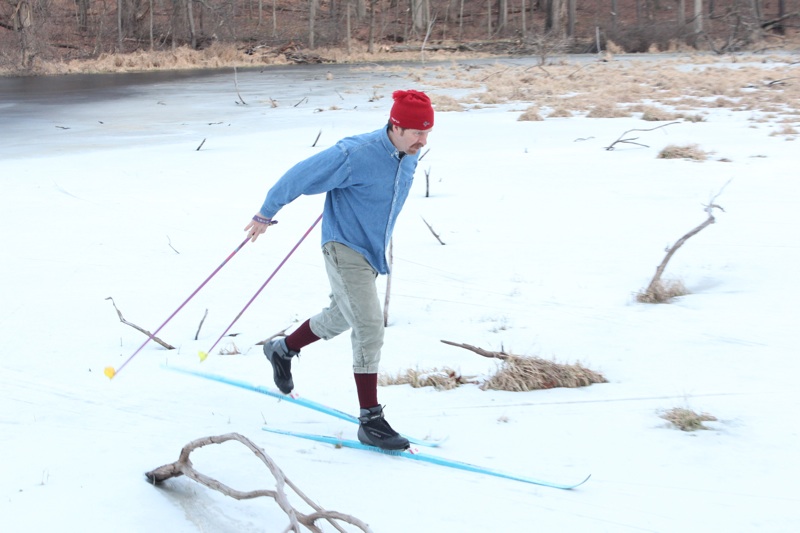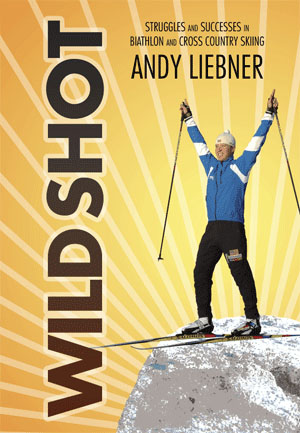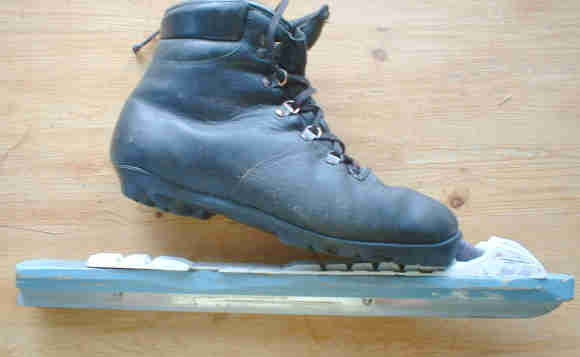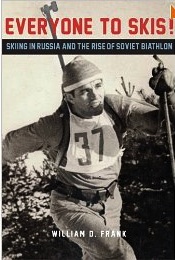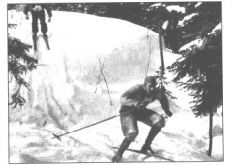More Photos Below!Gallery
[Here’s a story that first ran in early 2012 in “Silent Sports.”]
When is the last time classic skiing got a fresh technique? Why, when skating started!
I’m excited to show you a technique that is good for beginners and experts — touring, classic and skating!
How can one technique do all that? Let’s find out!
First, what is it?
It’s the Striding Doublepole, Cat1, or Military Two-Step. It even has other names and variations. …And it’s not mentioned in any regular instructional material.
You might already be doing it since it’s so intuitive, but since it’s not taught, you might think it’s a mistake. Or you might have tried it and it didn’t work. Well, new techniques take practice, exploration and instruction.
I first recognized it as something interesting when I was on a group tour and a friend started doing it. She said, “Oh, this is probably all wrong, but I like it. It’s fun and easy.” She was right. We were skiing in fresh snow that wasn’t fast enough for kick-doublepole. Her striding-doublepole was a nice change from striding so we all started doing it.
To do the striding-doublepole (SDP), you just take a stride, doublepole, then stride off your other leg as your hands pass your hips. Don’t throw your weight out when you stride, and when you pole don’t drop your torso. That’s it!
Stride twice for each poling cycle, as per regular diagonal, but use both poles on one side. (For more help, I have videos on OutYourBackdoor.com and on YouTube, username JeffOYB.)
Amazingly, while I was promoting this new “gear,” I saw that Dale Niggemann — a recent World Masters champ, coach, and Stevens Point, WI, developer of the CAT Ski “classic all terrain” trainer — had posted about it independently on his blog. He declared he found a way to do V1 and V1A on classic skis in diagonal tracks. He called his moves the Cat 1 and Cat 1A.
“I love creativity in skiing,” he says. “I love to play on skis and I encourage our high school team to do it, too. It doesn’t take much to get them going! They love jibskate moves, doing 180’s and 360’s down the trail. Having them add the Cat moves just gives them more variety. It helps them be more mobile in their skiing. And it’s sneaking skate training into their classic. We won the state champs last year so I know it works.”
Dale developed the Cat moves to let him doublepole on his classic-only CAT Ski trainers. Dale was inspired to do a year of training with just Cat moves. He then won a classic race using them, and won a skate race the next day.
In racing, the Cat 1A is used as a moderate uphill gear. It climbs better than kick-doubleple, so it fits between that and striding. The Cat 1 is used on steep grades instead of striding. They are, really, the only doublepole moves for steeper uphills.
Now, the jury is undecided on Cat skiing for racing, but the moves seem to offer an edge in soft conditions. Mostly, Dale says they’re extra “tools.” Also, they let you use skating poles for classicking.
Dale loves to coach the Cat moves for teaching and training skating. “That’s the best thing I’ve learned from them,” he says. “They’re easier to learn than skating with splayed skis and so are great for beginners, as all the body motions are the same. They’re also great for teaching sharp kick, fast cadence and poling. They develop muscle memory for going straight down the trail.” (Dale has videos of these moves on his CatSki website and YouTube. I have a nice video showing it on YT as well, under the username OutYourBackdoor.)
Also, not everyone always has access to groomed skating, while classic skis can be used practically anywhere there’s snow. And Dale reminds us, “CAT Skis can be used anywhere. Also, rollerskis aren’t always safe, especially for groups of kids.”
A skier who read my online promotions of SDP revealed that it is indeed taught somewhere: the US and Canadian militaries include it in their winter manuals. They call it the “Two Step.” Adding another stride (to change the side poled on) makes it the “Three Step.” Those winter soldiers know ungroomed skiing! (“Mountain Skiing 1941,” a vintage military video on YouTube, shows SDP.)
I’ve heard 70’s-era ski racers call it the “change up.” And I discovered an Australian manual that seems to teach it, plus a couple other timings not taught over here.
So, it’s not really new (skating wasn’t either) but I bet it’s new to many! …As is using it in so many ways. Remember, technique isn’t set in stone — and innovation is never finished.
You might ask, if it’s so cool, why doesn’t PSIA teach it? I recently asked their new Nordic Director, Mike Casey, a retired school teacher from Two Rivers, WI, about it and he said he is interested. He said he recalled alternative timings from back when he started skiing in the 70’s, but said it hadn’t snowed enough yet for him to test it. I wonder why they don’t teach all the alternatives, at least at their higher levels. Knowing a variety of moves seems, at the very least, like a great way to get a better feel for the strengths of the basics.
When I told my friends in southeast Michigan about it they said, “Hey, we know that move!” They call it the “Potto Shuffle” because they use it after they’re too tired to do anything else on their beloved, hilly 17-mile Potawatomi Trail.
Regular doublepoling requires throwing your center of gravity forward, crunching the torso and committing to gliding with your feet together. As such, it requires a fast, firm trail and a fitness mindset. The result is that many skiers — especially those who ski on homemade trails, carry a pack, or have other goals, simply don’t doublepole much. SDP gives them back their doublepoling!
SDP can inspire us to ski outside the box in other ways, too. It’s a fresh “dance step” to help us play with our rhythm and spice up our flow. Remember, too, that speed is relative, situational, and isn’t always immediate (a rest move can pay off later), nor is speed always important. Consider dancing: how many dancers compete? Yet there’s a whole lot of dancing to do and more to develop. Other snowsports celebrate creativity and variety, XC can, too!
All sorts of alternative timings were taught until recently. For instance, another fun old technique that’s still useful (especially in mixed-pace group outings, which we should all do more of) is Pendulum Poling. It fits in with the Three-Step. But we’ll save that for later. …Or, maybe you’re already doing it!
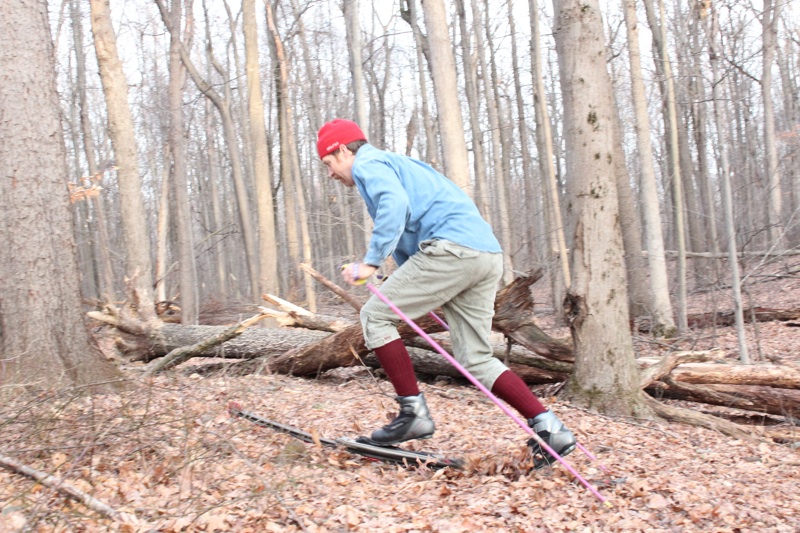
Do the SDP on CATskis in the fall! CATskis are the only “glide” way to get offroad ski training — including skate and DP training via the SDP.
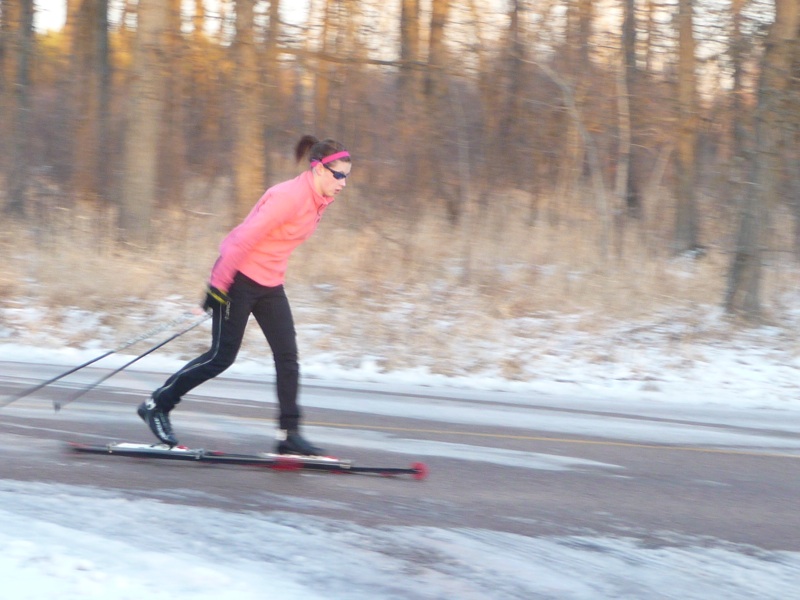
Dale’s daughter is a highschool racer who uses CATskis and the “CAT-1” move to train on roads too nasty for rollerskiing.
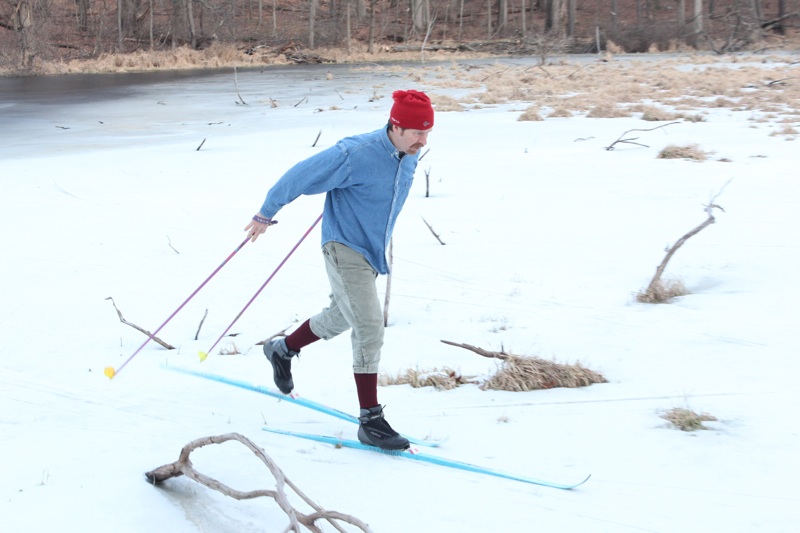
The Striding Doublepole: a thing of beauty. The only stable doublepole for touring and the only way to train for skating while classicking! Amazing.
